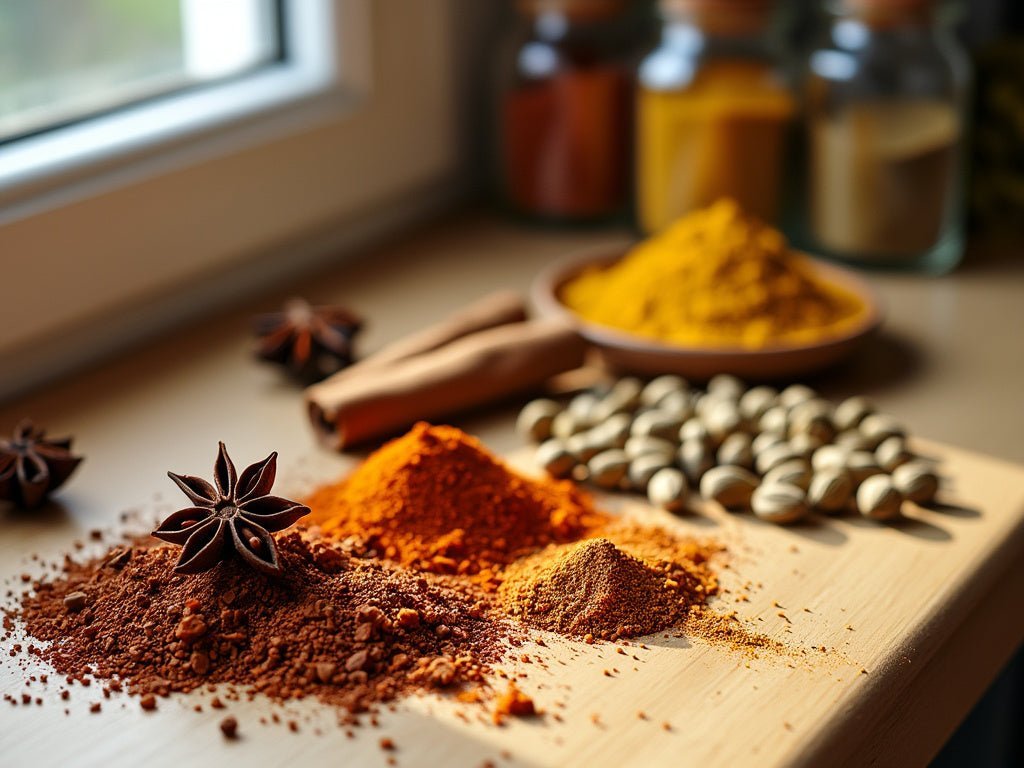
Whole vs. Ground Spices: Master Chef Secrets for Explosive Flavor in Every Dish
|
|
Time to read 4 min
|
|
Time to read 4 min
Table of contents
Exotic spices can dramatically enhance your cooking, adding depth, complexity, and unique flavors to your dishes. With the right knowledge and techniques, you can easily incorporate these spices into your culinary repertoire.
When it comes to cooking, spices are the key to unlocking a world of flavors. They can transform a simple dish into a culinary masterpiece, adding depth, complexity, and excitement to your meals. In this article, we'll explore 10 exotic spices that will take your cooking to the next level, along with tips on how to use them effectively.
Learn more about the benefits of using high-quality kitchen tools like bamboo cutting boards
Sumac, a Middle Eastern spice made from ground berries, offers a tangy, lemony flavor that can brighten up any dish. Its versatility makes it a fantastic addition to your spice rack.
Explore our authentic spice collection to enhance your culinary creations
Za'atar is a Middle Eastern spice blend that typically includes dried herbs, sesame seeds, and sumac. Its earthy, nutty flavor profile makes it a versatile addition to many dishes.
Asafoetida, also known as hing, is a pungent spice commonly used in Indian cuisine. Despite its strong aroma when raw, it mellows out during cooking and adds a savory, umami flavor to dishes.
Discover why bamboo is an excellent material for kitchen tools
Epazote is a herb native to Central and South America, known for its strong, pungent flavor. It's particularly valued for its ability to reduce the gas-producing effects of beans.
Gochugaru is a coarsely ground red pepper powder used in Korean cuisine. It offers a balanced heat with a slightly sweet and smoky flavor.
Explore global flavors with our World Food Explorer Spice Set
Grains of Paradise, also known as Melegueta pepper, offer a complex flavor profile with notes of pepper, cardamom, and citrus. They're an excellent alternative to black pepper in many dishes.
Saffron, one of the world's most expensive spices, adds a distinctive flavor and golden color to dishes. A little goes a long way with this potent spice.
Anise seeds offer a sweet, aromatic flavor reminiscent of licorice. They're widely used in both sweet and savory dishes across various cuisines.
Turmeric, known for its bright yellow color and earthy flavor, is a staple in many Asian cuisines. It's also renowned for its potential health benefits.
Lemongrass offers a bright, citrusy flavor with hints of ginger and mint. It's a staple in Southeast Asian cuisine and can add a refreshing note to many dishes.
Q: How long do exotic spices typically last?
A: Whole spices can last up to 4 years, while ground spices usually maintain their potency for about 2-3 years when stored properly.
Q: Can I substitute dried herbs for fresh ones in recipes?
A: Yes, but use about 1/3 of the amount called for fresh herbs as dried herbs are more concentrated in flavor.
Q: Are there any health benefits to using exotic spices?
A: Many spices contain antioxidants and have anti-inflammatory properties. Some, like turmeric, are being studied for potential health benefits.
Explore the history of bamboo in kitchenware
By incorporating these exotic spices into your cooking, you'll open up a world of new flavors and culinary possibilities. Remember, the key to mastering these spices is experimentation and practice. So, don't be afraid to get creative in the kitchen and let these exotic spices elevate your culinary skills to new heights.